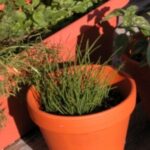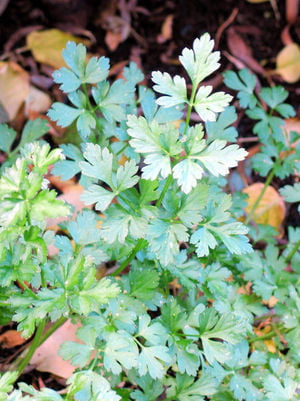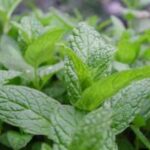Container vegetable gardening is a great option for growing vegetables and herbs for those with insufficient land area or bad soil conditions. Plants can be raised in containers in a patio or by the window sill as long as they have good sunlight and water and their roots have room to grow. Tomatoes, peppers, cucumbers, beans, eggplant, onions, radish, potatoes, parsley, basil, thyme, etc. are ideally suited for container vegetable gardening. In fact, special seed varieties well adapted to growing in limited space are available for many of these vegetables and herbs.
Although easy, extra care must be given to the plants when opting for container vegetable gardening. Here are some useful guidelines.
* Pick the right container: Selecting the right container size is important; herbs and some vegetables like onions need a 3-gallon pot while vegetables like cucumbers, tomatoes and eggplant need at least a 5-gallon container to accommodate bigger and longer roots. Mud or clay pots, plastic cans or buckets, metal cans, wooden boxes, etc. can serve as containers. The container must have holes at the bottom or side to drain excess water well. To drain well, place 1/2″ to 1″ of coarse gravel at the bottom of the container
.
* Select the growing medium: Although soil can be used, synthetic mixes containing peat moss, sawdust, vermiculite and a slow release garden fertilizer is better for container vegetable gardening. If you plan to add soil to the mix, ensure it is free of bacteria, insects and weed seeds (it may be heated in an oven to ensure this).
* Germinate seeds and transplant to containers: Plant the seeds in pans/trays/seeding pots. Placed them about 1/2″ deep in the medium described earlier. Ensure they receive ample sunlight. When they develop 2-4 leaves, transplant them into their containers without hurting their roots. Refer to the instructions for spacing requirements (usually found on the packet containing the seeds). Ensure that plants do not crowd in the container.
* Water and fertilize the plants: After the plants are transferred to their containers, Water the pots and containers once a day. When using a synthetic mix medium, add fertilizers almost everyday because the medium has limited nutrients. Once a week, leach with plain water so that harmful concentration of fertilizers can be prevented.
* Give them ample sunlight: Ensure that all your plants get ample sunlight. Cucumbers, eggplant and tomatoes typically need a lot of light while salad greens can get away with some shade. Ensure the crowding of plants in a pot do not starve some plants of sunlight.
* Protect them from fungi and insects: Container vegetable gardening demands special attention to protecting the plants from diseases and damage. Container plants are more prone to being affected than conventional garden plants because the plants tend be crowded. Inspect your plants regularly for holes or distortion in leaves, white sticky secretions, rust, etc. Use an insecticide or fungicide periodically.
* Harvest: Harvest your greens when they are tender and your vegetables when they are mature. Enjoy the fruits of your hard work!
Spring is round the corner. So get your tools ready for container vegetable gardening.






